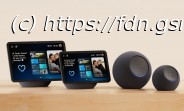The Huawei P20 Pro has hit the smartphone scene and caused quite a stir with its triple lens camera; but how does it compare to the equally great cameras on the Apple iPhone X, the Google Pixel 2, and the Samsung Galaxy S9 Plus? We put the four together in a photo shootout to find out which is best.
The Huawei P20 Pro has won praise, plaudits, and fans for its impressive triple-lens camera; but just how good is it compared to the other camera-phone powerhouses out there? On paper, it’s technically superior, and it has some truly unique features that make it stand out from the rest. However, the Google Pixel 2, the Samsung Galaxy S9 Plus, and the Apple iPhone X are hardly lacking in the camera prowess department, so we put them all against each other in a country-spanning photo shootout.
Let’s examine the camera specifications first, so each contender knows what it’s up against. First, the Huawei P20 Pro. It has three lenses: A 40-megapixel RGB lens with an f/1.8 aperture, a 20-megapixel monochrome lens with an f/1.6 aperture, and an 8-megapixel telephoto lens with an f/2.4 aperture. It’ll zoom in up to 3x without loss of quality, has electronic image stabilization, artificial intelligence for scene recognition and low-light photography enhancement, and 960 frames per second slow-motion video.
The Samsung Galaxy S9 Plus has two camera lenses on the back, both with 12 megapixels, and a clever mechanically adjusted aperture that swaps between f/1.5 and f/2.4. It has optical image stabilization, a 2x zoom without quality loss, and 960fps slow-motion video. The Google Pixel 2 is the only one of the four with a single camera lens, which has 12-megapixels and an f/1.8 aperture. That’s it, nothing special. However, it’s in the software that the Pixel 2 excels, providing beautiful HDR+ enhancements, and impressive bokeh-style portrait shots without a second camera lens.
Finally, the Apple iPhone X has two camera lenses, both with 12 megapixels. One takes wide-angle photos with an f/1.8 aperture, and the second f/2.4 lens handles telephoto duties. It has optical image stabilization, 2x optical zoom without a loss in quality, and bokeh-style portrait pictures. Basing everything purely on numbers, the Huawei P20 Pro has the rest of the pack beaten already; but numbers don’t tell the whole story.
The first picture shows us how closely matched all these cameras are. We photographed a fountain outside the Steigenberger hotel in Frankfurt on a sunny but slightly overcast afternoon. Let’s go in reverse, eliminating the ones we like least straight away. It’s the Galaxy S9 Plus that takes the least realistically-colored photo, which is overly bright, and the sky is lacking in the blue that other cameras revealed. The Huawei P20 Pro goes in the other direction, darkening the scene, particularly on the building.
That leaves the iPhone X and the Pixel 2, which are so closely matched, it’ll come down to personal preference. The iPhone X has a bluer sky, while the Pixel gets the colors and details exactly right. Forced to make a choice, we’d pick the Google Pixel 2 here, although it’s very close.
Winner: Google Pixel 2
The Euro sign is a well-known landmark in the center of Frankfurt’s financial district, and to capture the scene effectively, we shot our pictures in portrait orientation. The iPhone X is the first to fall here, with a washed out sky, a lack of detail, and it looks pixelated when zooming in. The distant sign in the bottom left of the image is relatively clear in all photos apart from the iPhone X, and it’s the same with the couple taking a photo in the bottom right.
The P20 Pro reveals detail when up close, a textured sky, and dark green grass; but the stars around the Euro sign are a little dark, and lack visual punch. The Pixel 2 and the Galaxy S9 take very similar pictures, with colors almost matching, and a similar level of detail. The Euro stars are bright, but it’s the Galaxy S9 that manages to best balance the blue of the sign with the gold of the stars, while maintaining the colors of the ground and the buildings.
Winner: Samsung Galaxy S9 Plus
Heading out into the German countryside, this picturesque bridge made us stop and take some photos, and the results couldn’t be more different. It’s the toughest call yet. One photo stands apart from the others, and it’s not technically the best image, but it’s the one that looks the most attractive to our eyes — the Galaxy S9 Plus. The grass on the right is wonderfully natural, the sky a baby blue, and the water reflective and cooling. If there’s a downside, it’s the slightly soft brickwork on the bridge that lacks a little detail.
The iPhone X comes next, producing a very balanced instantly-shareable picture. It’s here where you see more detail in the bridge, and in the foliage in the bottom right compared to the Galaxy S9 Plus. The P20 Pro and Pixel 2 are so close to the iPhone X, it’s a draw between all three, and largely up to personal preference.
Winner: Samsung Galaxy S9 Plus
Let’s zoom. Each of these photos used the camera’s standard zoom feature, going to 2x or 3x. The Pixel 2 is the only one without a lossless zoom mode, and it really shows when you get in close, consequently eliminating the phone from the running at the first hurdle. Surprisingly, the iPhone X comes next, failing to capture as much detail as the two front runners — the P20 Pro and the Galaxy S9 Plus.
Both these two phones took fantastic zoomed in images, but the P20 Pro takes first place here. The sharpness and detail is quite astonishing, and easily getting in much closer than any of the other phones too. While other categories have not revealed an instantly clear winner, this is the first time it has been obvious from the outset.
Winner: Huawei P20 Pro
Moving to Austria and Salzburg, we snapped this lively town square cafe set beside an imposing cliff face. It had everything: Color, drama, movement, and challenging lighting conditions. The iPhone X and the Pixel 2 both take good pictures, but they’re outmatched by the Galaxy S9 and the Huawei P20 Pro, which take great pictures. Hardly surprising, given the technology inside specifically designed to take pictures in these lighting conditions.
We love the way the Galaxy S9 captures the varied lighting under the cafe canopy, giving the shot a realistic edge; but its the P20 Pro that wins with some stunning detail. Just take a look at the texture on the road, and the brickwork under the pink lighting on the building, the yellow “Moving Pictures” sign, and then on the cliff face itself. It’s very impressive.
Winner: Huawei P20 Pro
The ultimate test? Walking past a dark entrance to a house, recessed from the road, you could barely make out anything that was there with the naked eye. The Pixel 2’s picture is brighter than what we could really see, and representative of what we’d expect a smartphone to achieve given the conditions. The iPhone X takes a better picture, with more detail, better color balance, and a good glimpse of what was shrouded in darkness.
The Galaxy S9 Plus is leaps and bounds ahead, showing the building itself, making the white sign readable, and revealing there’s a car hidden on the left hand side. However, the color is off and details are blurred, particularly the trees overhanging the car and the left of the picture.
You may think we wheeled out a massive spotlight for the P20 Pro’s picture, or that a security light flicked on; but we assure you, it was taken under exactly the same conditions. You can see the gravel driveway, the wall on the right, the shape and texture of the trees on the left, and even establish what brand of car is hiding. There are two trees in the center of the picture that are almost completely obscured in the other images, even the Galaxy S9 Plus’ photo.
Winner: Huawei P20 Pro
The P20 Pro uses artificial intelligence (AI) to adjust the camera settings depending on the scene. In this photo it switched to Blue Sky mode. It’s proof that Huawei’s decision to let you turn off the AI enhancements is a good one, because while the sky is a wonderful blue, it’s at the expense of detail in the lower half of the picture. The Galaxy S9 Plus also suffers from an overly blue sky and a lack of detail, especially on the wall in the right of the picture.






